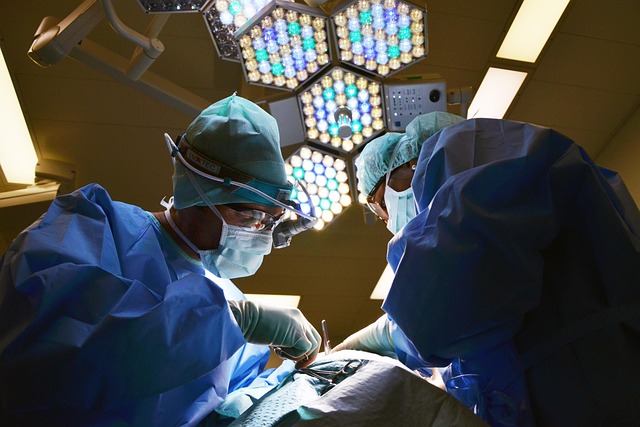Explore Rhinoplasty Surgery Options Available in the UK
Residents of the United Kingdom seeking to enhance their appearance may consider non-surgical nose reshaping, a procedure designed to smooth, lift, and reshape the nose in approximately 30 minutes. This innovative technique offers a safe and subtle approach, enhancing natural beauty without the need for traditional surgical methods.

Understanding Traditional Surgical Rhinoplasty Procedures
Traditional surgical rhinoplasty remains the gold standard for significant nasal modifications and has been refined over decades of medical advancement. This procedure typically involves making incisions either inside the nostril (closed rhinoplasty) or across the columella, the tissue between nostrils (open rhinoplasty). Both approaches allow surgeons to access and modify underlying bone and cartilage structures.
The open technique provides surgeons with maximum visibility and precision, making it ideal for complex cases requiring substantial structural changes. Closed rhinoplasty, while offering the advantage of hidden scarring, limits visibility but may be suitable for less complex modifications. Most UK surgeons are adept at both techniques and will recommend the most appropriate approach based on the patient’s specific needs.
Recovery from traditional rhinoplasty typically takes 1-2 weeks before patients can return to normal activities, though complete healing and final results may take up to a year. The NHS may cover rhinoplasty costs when performed for medical reasons such as breathing difficulties or birth defects, but most aesthetic procedures are performed privately.
Non-Surgical Nose Reshaping Alternatives
For those hesitant about surgery, non-surgical rhinoplasty has emerged as a popular alternative in the UK. This technique, sometimes called the “liquid nose job,” involves strategic dermal filler injections to address minor aesthetic concerns. Hyaluronic acid fillers can camouflage bumps, improve symmetry, lift drooping tips, and enhance overall nasal appearance without invasive surgery.
The procedure typically takes 15-30 minutes and requires minimal downtime, with most patients resuming normal activities immediately. Results are temporary, lasting 6-18 months depending on the filler used and individual metabolism rates. This temporary nature makes non-surgical rhinoplasty an excellent option for patients wanting to “test” a new nasal appearance before committing to permanent surgical changes.
Non-surgical rhinoplasty does have limitations—it cannot reduce nose size or address functional breathing issues. It’s best suited for minor aesthetic adjustments rather than structural changes. Many UK clinics offer 3D imaging to visualize potential results before treatment, helping patients make informed decisions about whether this approach will satisfy their aesthetic goals.
Benefits of Modern Rhinoplasty Techniques
Modern rhinoplasty has evolved significantly, with UK surgeons now employing advanced techniques that offer improved outcomes and patient experiences. Computer-assisted planning and 3D printing technology allow for unprecedented precision in surgical planning. Surgeons can create custom implants and simulate results with remarkable accuracy, leading to better alignment between patient expectations and actual outcomes.
Preservation rhinoplasty represents another significant advancement. Unlike traditional techniques that remove tissue, preservation approaches maintain the nose’s structural integrity while making modifications. This results in more natural-looking outcomes and potentially faster recovery times. UK specialists at leading centers increasingly offer this technique for appropriate candidates.
Modern rhinoplasty also emphasizes ethnic sensitivity, preserving characteristics specific to different ethnic backgrounds rather than imposing Eurocentric aesthetic standards. This patient-centered approach ensures results that enhance facial harmony while respecting individual identity. Additionally, improved anesthesia protocols and pain management strategies have made recovery more comfortable for patients throughout the UK.
Cost and Provider Comparison for Rhinoplasty in the UK
Rhinoplasty costs in the UK vary significantly based on procedure type, surgeon expertise, geographic location, and facility fees. Understanding these variations can help patients plan appropriately for their treatment.
| Procedure Type | Provider Type | Cost Estimation (£) |
|---|---|---|
| Traditional Surgical Rhinoplasty | Private Hospital | 4,500 - 7,000 |
| Traditional Surgical Rhinoplasty | NHS (medical necessity only) | Free (with referral) |
| Ultrasonic Rhinoplasty | Specialist Clinic | 6,000 - 9,000 |
| Non-Surgical Rhinoplasty | Medical Aesthetics Clinic | 350 - 800 |
| Revision Rhinoplasty | Specialist Surgeon | 7,000 - 12,000 |
Prices, rates, or cost estimates mentioned in this article are based on the latest available information but may change over time. Independent research is advised before making financial decisions.
Choosing the Right Rhinoplasty Approach for You
Selecting the optimal rhinoplasty approach requires careful consideration of multiple factors. First, assess your goals—whether they’re primarily aesthetic or functional. For significant structural changes, traditional surgery remains necessary, while minor adjustments might be achievable with non-surgical techniques.
Timeframe and recovery constraints also matter significantly. Surgery requires 1-2 weeks of noticeable recovery and potentially months before final results emerge, while non-surgical approaches offer immediate results with minimal downtime. Budget considerations will naturally factor into this decision, with surgical options representing a significant investment compared to temporary non-surgical alternatives.
Most importantly, consultation with qualified specialists is essential. The UK has stringent qualification requirements for cosmetic surgeons, so look for practitioners registered with the General Medical Council who have specific training in rhinoplasty. Many reputable surgeons offer both surgical and non-surgical options, allowing them to provide unbiased recommendations based on your specific needs rather than pushing one particular approach.
Conclusion
The rhinoplasty landscape in the UK offers diverse options to meet various aesthetic and functional needs. From traditional surgical approaches that deliver permanent, dramatic results to non-invasive alternatives offering subtle enhancements with minimal downtime, patients have more choices than ever. Advances in technology and surgical techniques continue to improve outcomes while minimizing risks. By understanding available options and consulting with qualified specialists, UK patients can make informed decisions about rhinoplasty that balance their aesthetic goals, practical constraints, and individual anatomical considerations.
This article is for informational purposes only and should not be considered medical advice. Please consult a qualified healthcare professional for personalized guidance and treatment.




